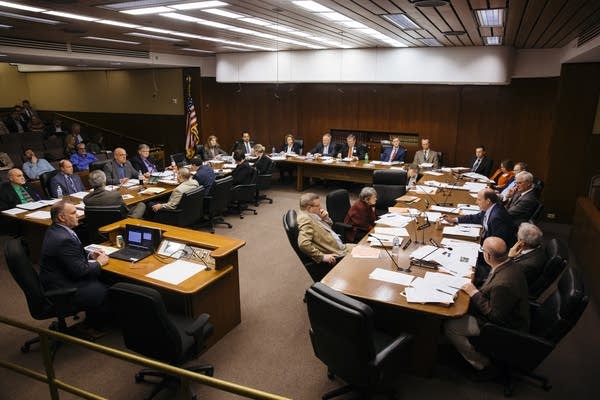What is MNLARS and what does it mean to you?

The House Transportation Finance Committee debates two amendments to a bill providing funding to the Minnesota Licensing and Registration System inside the State Office Building in St. Paul, Minn. on Tuesday, March 6, 2018.
Evan Frost | MPR News
Go Deeper.
Create an account or log in to save stories.
Like this?
Thanks for liking this story! We have added it to a list of your favorite stories.


